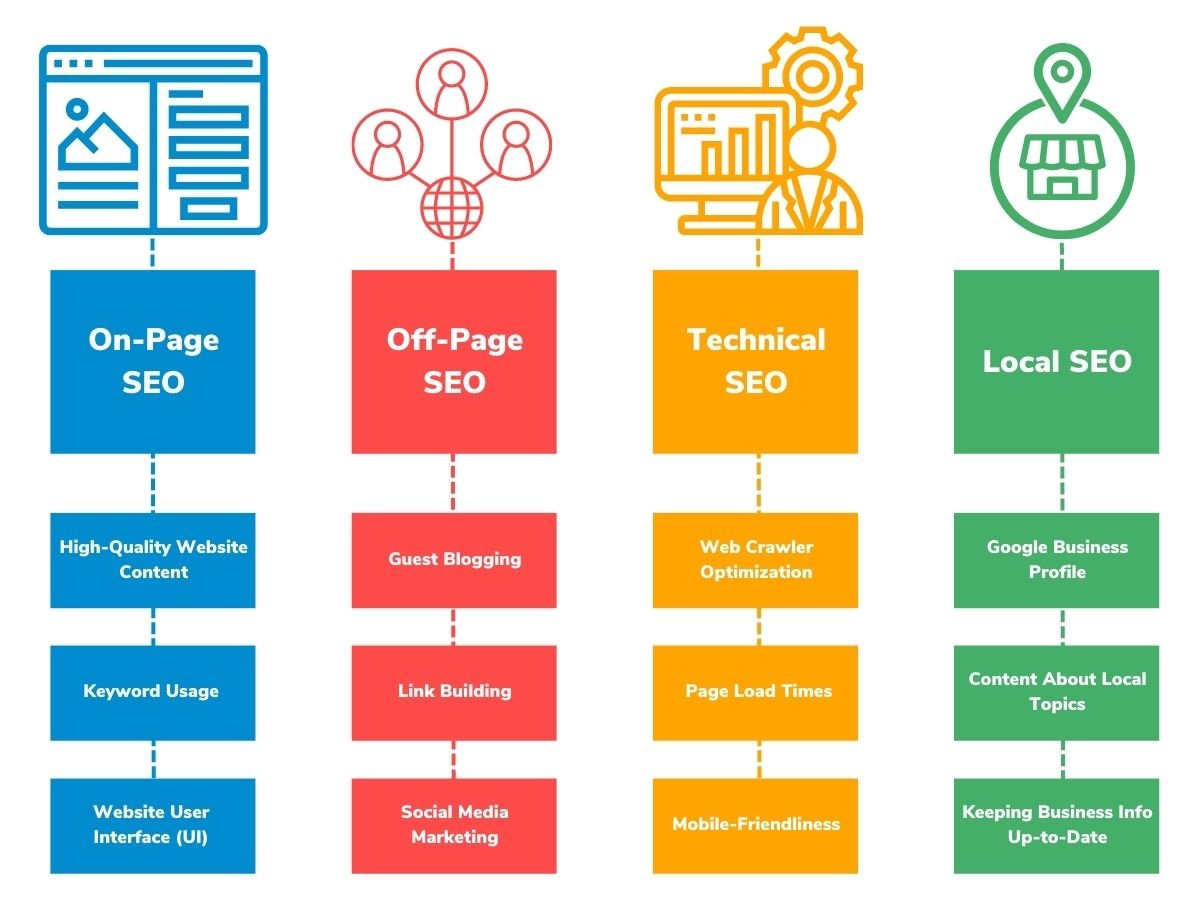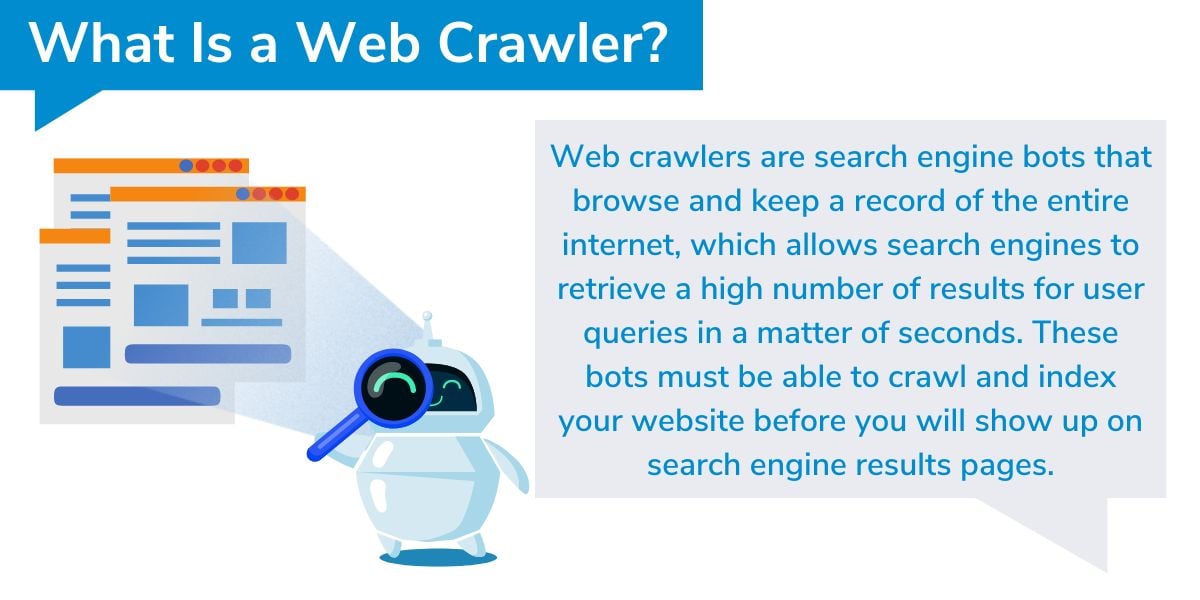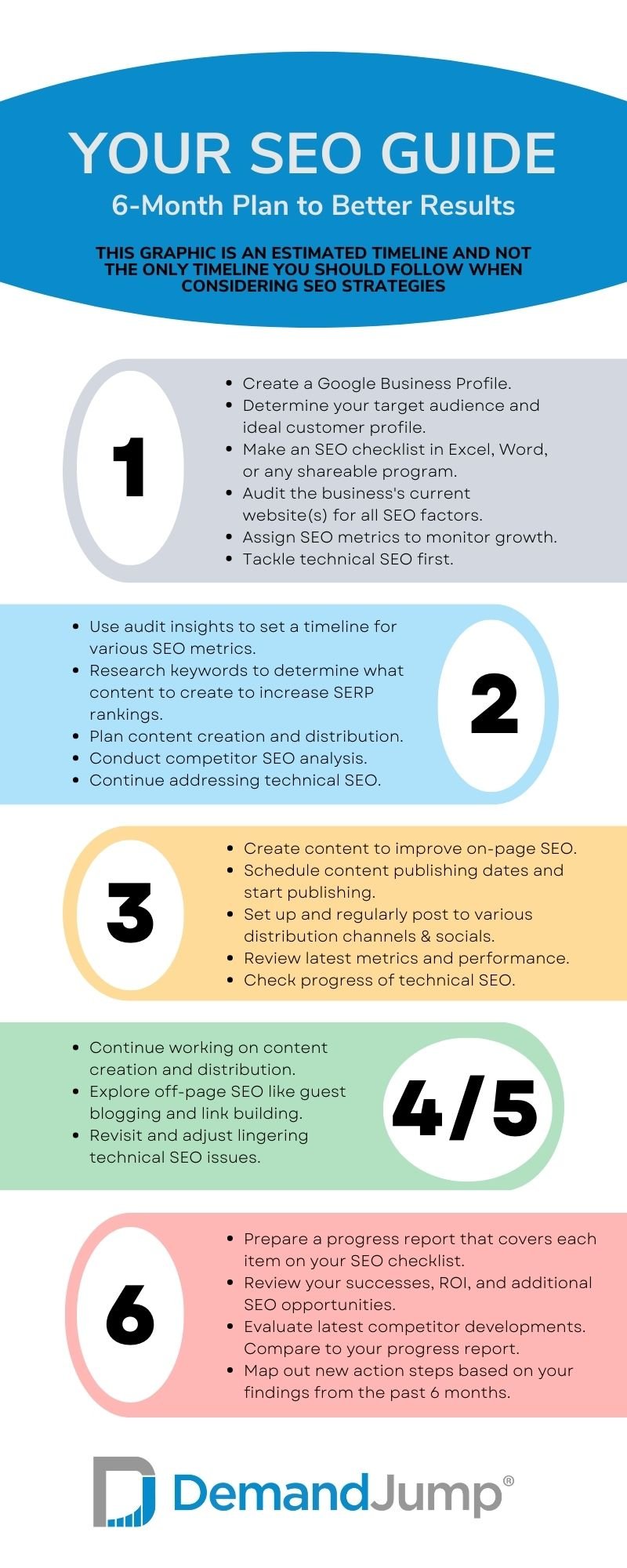So you came to the internet in search of a comprehensive SEO strategy template—welcome! You’re in luck. We’ll show you how to get an SEO content template for free and walk you through the process of making one yourself.
As someone famous (possibly Benjamin Franklin, maybe Confucious?) once said, “Give me a template, and I forget; teach me, and I may remember; involve me, and I learn.” Well, those aren’t the exact words, but it was something like that.
The point is—if all you want is an SEO strategy template for 2023 to help you create content that ranks at the top of search engines, scroll to the bottom of this blog. But if you want to learn and involve yourself in the creation of an SEO template—stick around, and we’ll show you how it’s done.
How Do You Write an SEO Strategy?
To write an effective SEO strategy, you must weigh and consider numerous action steps to increase your website’s search engine rankings. There are many influential factors in this ever-evolving dance of organic traffic, changing algorithms, and web crawlers, and all will play a crucial role in the success of your business.
“Hold up, what the heck is a web crawler?”
Don’t worry, young Padawan, we’ll get to it (no insects are involved). To do so, we must address the four pillars of SEO.
What Are the 4 Pillars of SEO?
On-page, off-page, technical, and local SEO are the four pillars of a solid SEO strategy. Within each pillar are numerous building blocks that contribute to the overall achievement of a website. Whether you’re creating an SEO plan template for a new website or hoping to improve a well-established one, you must thoroughly understand these four pillars. Let’s take a look at each one more closely.

What Is On-Page SEO?
On-page SEO involves any action that improves content on the pages of your website. This type of SEO will consume much of your strategizing, as a complete on-page SEO to-do list is lengthy. To get started, it might help to focus on some of the more important on-page SEO factors.
What are the 3 most important on-page SEO factors? Marketing experts everywhere argue about this at length, but here are some on-page SEO actions that garner the most attention:
- High-Quality Website Content - Your website’s content should be well-written, engaging, regularly updated, and highly researched. Easy enough, right? Kidding—we know this is one of the more daunting tasks in SEO. The topics you write about need to have a natural overlap between what your business does and what your target audience cares about. Don’t spread yourself too thin over numerous topics; focus on creating amazing content that matters most to your business goals.
One of the simplest ways to approach this aspect of SEO is to think about what you like about website content—and what drives you nuts! In a cyber world overwhelmed with old sales cliches and clickbait, innovative content with fresh perspectives stands out. If you can create this content, you’ll show folks you are an authority in your realm. More authority leads to more brand recognition, consumer trust, and higher search engine rankings.
“But wait, I’m horrible at writing! What should I do?” If writing is not your strong suit, consider hiring a professional writer to help you out. Alternatively, just practice! Take a writing course, watch YouTube videos on writing, and use writing assistants like Grammarly to improve your style and grammar. Practicing will allow you to create content that appeases the humans reading it and the algorithms ranking it.
- Keyword Usage - Keyword usage goes hand in hand with creating high-quality web content, but it has enough ins and outs that it deserves its own section. To get started with an on-page keyword SEO strategy, conduct keyword research to see what your audience is searching for and what your competitors are writing about.
This process is time-consuming to complete manually, so consider using an SEO keyword research platform like DemandJump. Simply type in a keyword you want to rank for, and DemandJump will show you a network of phrases and questions around your chosen topic. You can also see your competitors’ performance and which keywords they currently rank for. By allowing this research to guide your writing, you can create content confidently knowing you’re exploring what you and your audience cares about.
However, don’t feel you have to go after those high search volume keywords right away. When you begin to write website content or update your current content, consider aiming for low-hanging fruit first. You can also use DemandJump to see which pieces on your website are presently performing well. Adding more quality information to these pages can increase your website rankings on search engine results pages (SERPs).
- Website User Interface (UI) - The UI you provide for website visitors will either make them want to stay or bounce. To make your UI as user-friendly as possible, have a clear visual hierarchy to your layout. Again, think of what you like to see on a website—do you want a bunch of ads all over the place? A complicated menu bar with too many options? Unconventional navigation that is trying to be “cool” but instead is illogical and confusing? No—nobody likes that. Strive for clarity while keeping a user-centric mindset.
If you’re looking for guidance on arranging your website’s written content, give Pillar-Based Marketing (PBM) a try. PBM is about creating and organizing content in a way that’s people- and SEO-friendly. You can read more about this strategy here: Pillar-Based Marketing.
What Is Off-Page SEO?
Off-page SEO is any activity you do off your website to improve your search engine rankings. You’ll note you have less control over these tasks, but you can influence their direction to some degree. Let’s take a look at some off-page examples of SEO in digital marketing for a better understanding:
- Requesting to Guest Blog - Guest blogging can boost your off-page SEO and give you a chance to hone your writing skills. You can find tons of professional guest blogging experiences out there, but make sure you go with a site where your target audience can find you. To uncover these websites, consider searching for the top keywords you want to rank for plus “guest blogging.” If you sell handmade soap for example, you could search for “soap making guest blogging.” Lovin’ Soap Studio is a top hit, and sure enough, they’re looking for guest blogs on all things soap. Approach a potential guest blogging opportunity with examples of your past work and a quick summary of what you would like to write for them. Don’t forget to include a link to your website in your blog—as long as the hosting website is okay with it!
- Getting Your Site on Other Sites - This practice is called “link building.” If tons of people are linking to your website, search engine algorithms will interpret this to mean you are an authority on a topic. Don’t fall down the link spam rabbit hole, though—Google has clarified that they will not reward practices like paying for links, requiring links as part of a contract, and numerous other forms of link spam. Instead, seek to establish trust with other business owners and earn those links organically. You can publish new data, respond to trending topics, or create unique audio and visual content to attract backlinks to your website naturally.
- Marketing on Social Media - Your SEO action plan template should allow space for social media marketing. While well-written, SEO-focused content will gain organic traffic, it can never hurt to attract traffic from another channel. Besides, Facebook alone had 2.96 billion monthly active users near the end of 2022, so if you truly want to get more eyes on your website—meet people halfway on social media.
- Sending Out E-Newsletters - Getting website visitors to sign up for email newsletters is a classic off-page SEO practice. It keeps folks coming back for more. After you’ve created a bunch of good content to appeal to the on-page SEO gods, you can promote that content further in your newsletter.
What Is Technical SEO?
Technical SEO focuses on the technical components of search engine marketing. Many of these elements, when done right, can make it easier for web crawlers to find, crawl, and index your website. Web crawlers are search engine bots that browse and keep a record of the entire internet, which allows search engines to retrieve a high number of results for user queries in a matter of seconds. These bots must be able to crawl and index your website before you will show up on SERPs

How do you create an SEO strategy that supports technical SEO and makes your website easier to crawl? Start by following best practices like:
- Include title and header tags in your site’s HTML, so crawlers understand where the main points of your site are.
- Write alt-text for images so crawlers can classify your image and pull it up for folks doing an image search.
- Reduce page load times by compressing images, getting a quality hosting provider, and removing plugins you aren’t using anymore.
- Clean up dead links, so users don’t stumble upon annoying 404 errors and bounce.
- Implement HTTPS encryption to show you are serious about security, which Google algorithms will reward in SERPs.
- Generate a sitemap to provide essential information about the infrastructure of your web pages and how they connect, which web crawlers will examine to crawl your site more effectively.
- Add structured data to your website to show web crawlers exactly where vital information is and to earn a site preview (aka a “rich snippet”) on Google SERPs.
- Provide a first-rate mobile website experience that’s just as satisfying as a desktop experience.
What Is Local SEO?
Local SEO involves anything you do to increase your SERP rankings on a local level. If you have a brick-and-mortar business or only serve a particular geographic area, you need to include local SEO in your overall strategy.
- Creating a Google Business Profile - If you’re trying to increase your local search engine rankings, start by making a Google Business Profile. By doing this, you are signaling to Google: “I’m a legit business, and here’s where I’m at and how to contact me.” Once you finish setting up your profile, you’ll increase your chances of showing up on local and Google Maps searches.
- Making Content About Local Topics - Stay up-to-date on local happenings in your area and insert your business where it makes sense. Extend this to your keyword research and look for geo-specific keywords to focus new content around those topics.
- Ensuring Your Business Info Is Consistent - There are numerous business directories out there on the internet, like Yelp, the Better Business Bureau (BBB), Yellow Pages, and more. Ensure you are on these directories, and double-check that your key contact information is the same everywhere it’s listed.
How Do You Do a 6-Month SEO Plan?
Picture what you want the most out of your SEO work in the next six months. Identify your priorities, weaknesses you hope to overcome, and where you want to be in six months. To give you a general idea of what this could look like for a business, consider the following 6-month SEO plan:
Month 1
- Create a Google Business Profile, and confirm your business contact information on popular online business directories.
- Determine your target audience and ideal customer profile.
- Make an SEO checklist in Excel, Word, or some other program so you can easily share it with everyone working on SEO.
- Audit the business’s current website(s) for all on-page, off-page, technical, and local SEO factors.
- Assign SEO metrics to monitor growth.
- Begin tackling technical SEO first to establish a solid foundation for other SEO-related work.
Month 2
- Use audit insights to set a six-month timeline and goals for various SEO-related metrics (i.e., organic traffic, conversion rates, time on page, average page load time, etc.).
- Research keywords to determine exactly what content to create to increase SERP rankings.
- Plan content creation and distribution.
- Conduct competitor SEO analysis to see where competitors are succeeding or falling short.
- Continue addressing technical SEO issues.
Month 3
- Create content to improve on-page SEO, including written, audio, and video content.
- Schedule content publishing dates and start publishing.
- Set up and regularly post to various distribution channels (i.e., Instagram, YouTube, Pinterest, Facebook, etc.).
- Review your latest metrics and performance.
- Check the progress of technical SEO and continue making necessary adjustments.
Months 4 and 5
- Continue working on content creation and distribution.
- Explore off-page SEO opportunities, like guest blogging and link building.
- Revisit and adjust any lingering technical SEO issues.
Month 6
- Prepare a progress report that covers each item on your SEO checklist.
- Review your successes, return on investment (ROI), and additional SEO opportunities.
- Evaluate the latest competitor developments and compare them to your progress report.
- Map out new action steps for the next few months based on your findings at the six-month mark.
Does this feel more like an SEO strategy plan for just 3 months—or maybe closer to an SEO strategy plan for 12 months? Feel free to condense or expand this plan depending on the number of resources you have available.
I Just Want a Free Content SEO Strategy Plan to Follow…
DemandJump is here for you. Try out our marketing strategy platform, where a free insight report awaits you. Simply enter your company website and a keyword you would like to rank highly for on SERP, and we’ll take care of the rest. Soon you’ll have valuable insights like:
- Top keywords and questions in the search network around your chosen keyword
- Your current keyword SERP rankings and positions
- Suggestions for existing content you can improve
- Three free competitor insights to see how they are performing on SERPs
- And much more!
Business owners and SEO strategists have enough on their plates. Click below to let DemandJump help take some of the load off, and download the graphic to start tracking your 6-month SEO plan.















